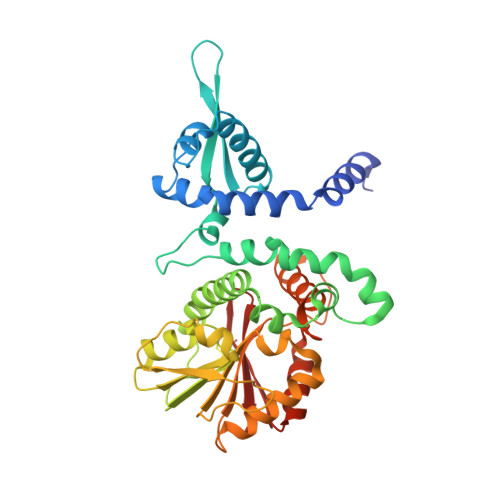Proline/alanine-rich sequence (PAS) polypeptides as an alternative to PEG precipitants for protein crystallization.
Schiefner, A., Walser, R., Gebauer, M., Skerra, A.(2020) Acta Crystallogr F Struct Biol Commun 76: 320-325
- PubMed: 32627748
- DOI: https://doi.org/10.1107/S2053230X20008328
- Primary Citation of Related Structures:
6YJW, 6YJX - PubMed Abstract:
Proline/alanine-rich sequence (PAS) polypeptides represent a novel class of biosynthetic polymers comprising repetitive sequences of the small proteinogenic amino acids L-proline, L-alanine and/or L-serine. PAS polymers are strongly hydrophilic and highly soluble in water, where they exhibit a natively disordered conformation without any detectable secondary or tertiary structure, similar to polyethylene glycol (PEG), which constitutes the most widely applied precipitant for protein crystallization to date. To investigate the potential of PAS polymers for structural studies by X-ray crystallography, two proteins that were successfully crystallized using PEG in the past, hen egg-white lysozyme and the Fragaria × ananassa O-methyltransferase, were subjected to crystallization screens with a 200-residue PAS polypeptide. The PAS polymer was applied as a precipitant using a vapor-diffusion setup that allowed individual optimization of the precipitant concentration in the droplet in the reservoir. As a result, crystals of both proteins showing high diffraction quality were obtained using the PAS precipitant. The genetic definition and precise macromolecular composition of PAS polymers, both in sequence and in length, distinguish them from all natural and synthetic polymers that have been utilized for protein crystallization so far, including PEG, and facilitate their adaptation for future applications. Thus, PAS polymers offer potential as novel precipitants for biomolecular crystallography.
Organizational Affiliation:
Lehrstuhl für Biologische Chemie, Technische Universität München, 85354 Freising, Germany.



















